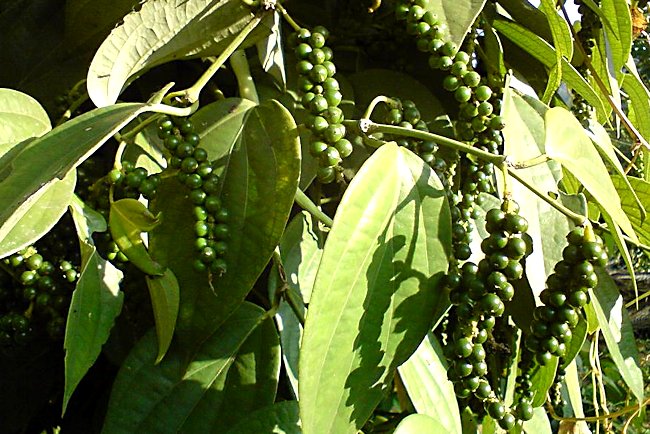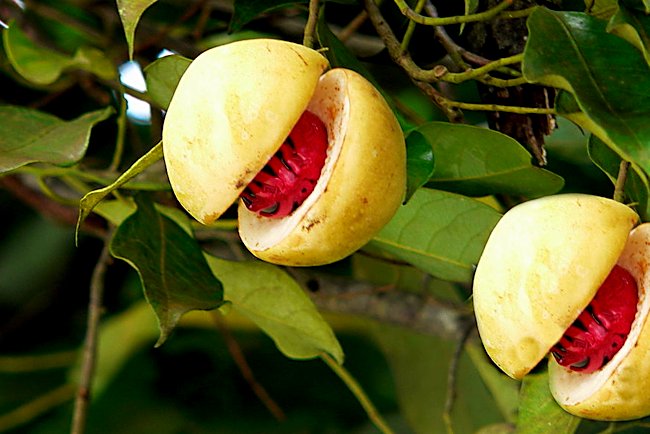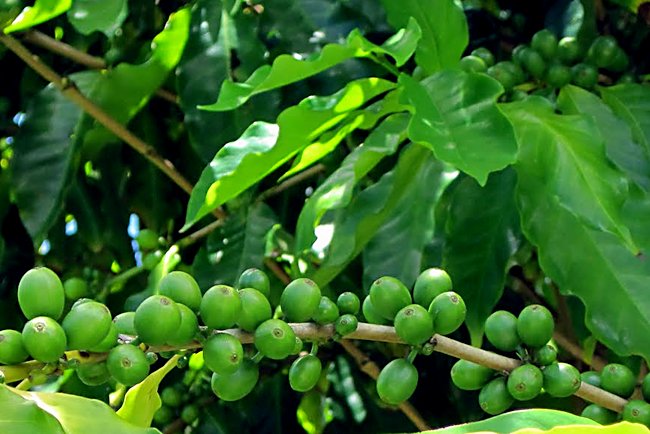The Colonial Garden - Gardens by the Bay in Singapore
When Sir Stamford Raffles established Singapore is a major trading centre, he started a major research program into plantation style cash crop farming.

He needed to know what plants would be most suited to production in climate of tropical Singapore and Malaysia. He imported several different cash crop plants with the view of improving the economy of the colony of Singapore and British territories around the world.
Coffee was believed to be one of Singapore's future moneymaking crops. Many plantations were started around the island. It was a lucrative business as the demand for coffee in Europe was very high. In the 1820s Coffee surpassed pepper as the most valuable south-east Asian export to Europe.
Then disaster struck in 1890. Most of the plants were destroyed by disease. By the 1900s, most of the coffee plantations were replaced with the new king among cash crops. This, of course, was rubber.
With the growing industrialisation of Europe and the rest of the world, there was a high demand for rubber latex. Rubber was originally from the Amazonian basin of Brazil. Plants were successfully transported to Malaysia and Singapore by British botanists. Each tree produce a bucket of latex a day. Each Plantation had thousands of trees.

Each tree produce a bucket of latex a day. Each Plantation had thousands of trees. The latex was put on a large tray and heated. When dry, these rubber sheets were bound up and exported to be processed in European and American factories. Most of Singapore's rubber Plantations were in the centre of the island and along the North East coast. By the 1920s South East Asia was growing over 50% of the world rubber and Singapore became the rubber capital of the world.
The rubber tree excretes a white liquid latex from any wound its bark receives. It is nature's way of protecting the plant. The sticky liquid repels predators and helps avoid infections that might penetrate the damaged sections of the tree. At the Singapore Botanical Gardens, in the late 1800s, director Henry 'Rubber' Ridley developed a new way of extracting rubber latex, without seriously damaging the tree itself.
This new knowledge increased latex production around the British Empire and especially in Singapore. The problem with starting a rubber plantation is that you do not see any return on your investment for at least seven years. That is how long it takes the trees to mature. This problem was fixed, when it was observed that Chinese laborers' were planting pineapples under the trees. It only took 18 months for the pineapple plants to start is producing commercially viable fruit. Pineapple production took off in parallel with the establishment of rubber tree plantation estates.

From the early 1600s Dutch merchants ran a monopoly on the trade of the exporting of nutmeg to Europe. They controlled the islands where it was grown. During the early part of the 1800s Holland became an ally. Napoleon. The British therefore temporarily to control of Dutch owned lands in Asia. The botanists took this opportunity to take plants back to Britain and also Singapore, where they were grown in botanical Gardens and also in tropical regions as a cash crop. After the islands were given back to Holland the Dutch no longer had a monopoly on this lucrative spice.
Sir Stamford Raffles had 125 nutmeg trees planted in Singapore's technical Gardens as an experiment in 1819. They grew successfully and this started a nutmeg tree planting mania amongst the European plantation owners. Areas that have been flower gardens or ornamental grounds of private houses were dug up and turned into nutmeg tree orchards. Disaster struck in the 1860swith the arrival of the disease that killed the nutmegs trees.
After the extermination of the coffee plants European farmers looked for replacement cash crops. Rubber was very successful, but not all experimental plants had the same success. The cocoa tree was introduced to Asia to produce chocolate and cocoa powder for chocolate drinks and cakes. It did well in Sri Lanka and Java. It did not grow as well in Singapore.
Cassia is very similar to cinnamon. It looks tastes and smells similar to its close relative. It is native to China and is also known as Chinese cinnamon. India and Sri Lanka was the original home for cinnamon. Cassia was first planted in Singapore's Botanical Gardens in 1882. The plant grown to 25 feet within four years. It liked Singapore's climate. Botanical Gardens director Henry Ridley recorded in 1912 that it had a very aromatic smell and the spice produced a strong flavour. Cassia was grown commercially in Singapore.
One of the most desired and sought-after spices by Europeans was cloves. Until the 18th century they only grew in just five islands in the Moluccas. Sir Stamford Raffles planted 45o cloves trees in the experimental garden at Fort Canning and in the Singapore Botanical Gardens. Unfortunately, they died in the 1860s, when nutmeg blight struck the island. Cloves are just dried, unopened flower buds. They are valued all over the world for making medicines, perfumes and as a condiment. In Europe the rich burn them to enjoy the aromatic fragrance that was given off. They also believed it helped to keep away the plague. Stop in China they are chewed and used as a breath freshener.
Singapore's pepper plantations required forests to be cleared by slashing and burning. But once all the trees had gone planters found it hard to find wooden stakes for the pepper plants climb up. There was also a lack of wood to burn to help reduce fertiliser. Clearing forests also reduced the amount of nutrients that were available for the pepper plants. After a few years of cropping the land became sterile and useless for producing cash crops. The farmers then had to move on to the next section of forest and so the destructive cycle went on. After a while lessons were learned his initial mistakes.
Pepper was often grown with another climber called the Gambier for support, over poles or trunks. Planters found out that by spreading cooked Gambier leaves on the ground between posts and supporting tree trunks of pepper plants that when they decomposed they fertilise the soil. There was an added benefit that believes detectives the pepper plant roots from the intense heat of Singapore's tropical sun. Gambier was initially used by the Chinese for tanning and dying materials. In the 1830s, with the arrival of the British Gambier became a useful cash crop. They were used in the growing textile and leather industries back in the British Isles.
Travel books

